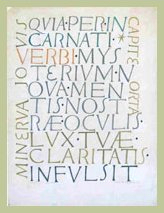
|
|
Spring 2010, Web Issue 13
A multidisciplinary
journal in the
arts and politics

Paintings & Prints
Poetry & Prose
Virtual Facsimiles
Founding Editors:
Joe Brennan
Carlo Parcelli
Contributing Editors:
Bradford Haas
Rosalie Gancie
Cathy Muse
Mark Scroggins
Jim Angelo
Web Editors:
JR Foley
Rosalie Gancie
Nicole Foley
-
I said, Ah! what shall I write? I enquired up and down. (He's tricked me before with his manifold lurking-places.) I looked for His symbol at the door. I have looked for a long while at the textures and contours. I have run a hand over the trivial intersections. I have journeyed among the dead forms causation projects from pillar to pylon. I have tired the eyes of the mind regarding the colours and lights. I have felt for His Wounds in nozzles and containers. I have wondered for the automatic devices. I have tested the inane patterns without prejudice. I have been on my guard not to condemn the unfamiliar For it is easy to miss Him at the turn of a civilization.- David Jones
a selection from:
A,a,a Domine Deus©Faber and Faber
All essays, poetry, fiction, and artwork are copyrighted in the
names of the authors and artists,
to whom all rights revert.
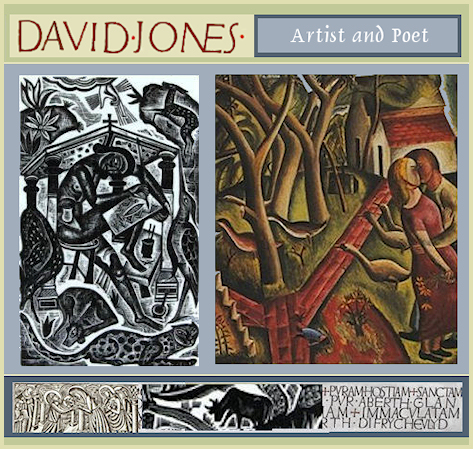
Newly added September 2010:
Colin Wilcockson on David Jones's letters
J.R. Foley on Robert Coover's Noir: A Novel
& Massimo Bacigalupo on Giano Accame
intro
____________________
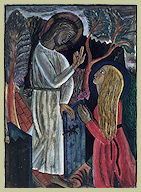
|
Kathleen Henderson Staudt
An Introduction |
| William Blissett |
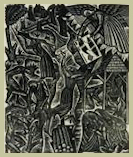
|
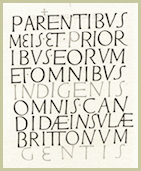
|
Kathleen Henderson Staudt
"The Sagging End
Revisiting a Long Conversation
|
| Tom Goldpaugh |
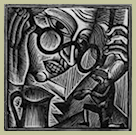
|

|
Rev Dr Calum Macfarlane
" There Is No Escape From Incarnation":
Sacramental Particularity As An Antidote
|
| DEREK SHIEL |
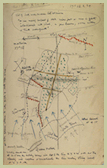
|
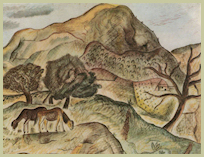
|
Anne Price-Owen
Materializing the Immaterial
|
|
Colin Wilcockson
Mythological References in
|
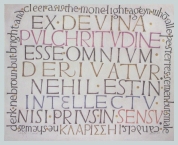
|
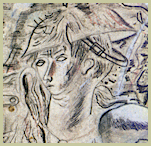
|
and
"I have journeyed
|
|
Thomas Dilworth
The Lee Shore
|

|
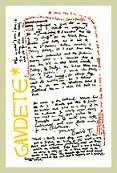
|
Notes on some
|
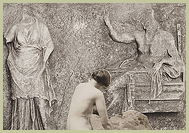
|
David Annwn
Tutelar,
Myth, Women poets and David Jones's
|
|
and
Cultural Spaces in David Jones's
|
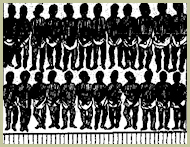
|
|
|
||
|
Carlo Parcelli
David Jones' 'The Sleeping Lord', Melvin Tolson's 'Libretto for the Republic of Liberia' and American Empire |
||
David Jones - A Collection of Images & Resources:
Four Images from A Rosary Calendar 1931
The Chester Play of the Deluge - Ten Wood Engravings
Colin Hughes, David Jones, and the First World War Archive
Cantica Natalia, St. Dominic's, and the Stanhope Press
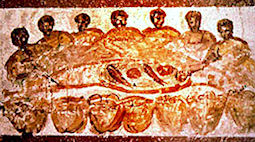
Carlo Parcelli
THE CANAANITE GOSPEL:
Carlo Parcelli reads selections
|
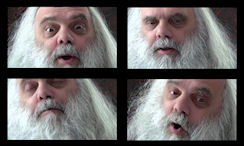
|
plus
The Canaanite Gospel
|
| David Hickman |
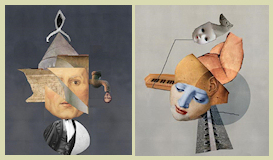
|
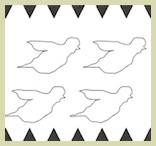
|
Peter O'Brien |
|
JR Foley
a review of a new novel by Lance Olsen
|
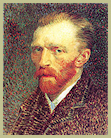
|
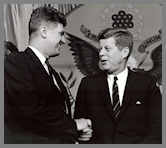
|
JR Foley
My Father's Miscellaneous Income |
|
Joe Brennan
a selection from a work in progress
|
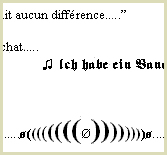
|
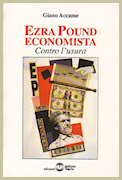
|
Massimo Bacigalupo
|
|
JR Foley
NOIR: A Novel
a review of
|
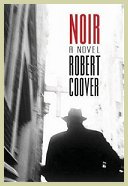
|
In this issue...
David Jones,
painter and poet, widely unknown during his lifetime and for decades after, even in his native Britain, is gradually emerging from semi-obscurity. FlashPøint, with this special issue, is giving that emergence a muscular assist. His visual art (paintings, engravings, drawings) as well as his verbal art (poetry, essays) is magnificently rich in color, texture, vision, and complex meaning. Readers new to him, or even a little familiar with him, will find here a feast of the verbal and visual no English poet has produced since William Blake.
Jones, a Londoner of Welsh extraction, surviving wounds in World War I, developed his painting and engraving skills for another decade before sidling, almost by accident, into writing about the experience of war in a mixture of prose and poetry he called In Parenthesis (1937). Widely unknown does not mean neglected. That his achievement did receive some notice is indicated by the help T.S. Eliot gave him in reaching publication. Fifteen years later Jones published The Anathemata (1952), which W.H. Auden has called "very probably the finest long poem written in English this century."
All the while he composed his books Jones continued to produce paintings, water colors, and drawings. His visual works can be found in many galleries as well as reproduced in several books. He also published essays on various matters related to his dual projects, later gathered in Epoch and Artist and (posthumously) The Dying Gaul. Never satisfied with his poetry, he never considered his poems finished, but was persuaded to publish a third book of "fragments," The Sleeping Lord, notable for dramatic meditations on the situation of soldiers (specifically Roman) on the frontiers of empire. After his death in 1975 another gathering of related "fragments" came out as The Roman Quarry; and more than a generation later newly collected poetry is scheduled to appear.
The work of David Jones has recently been the subject of conferences in Cambridge, England, and Washington, D.C. Two participants in these conferences, FlashPøint editor Bradford Haas and Kathleen Henderson Staudt, are coordinating this presentation of Jones's work and work about him.
Prof. Staudt contributes a general introduction, Why David Jones? Why Now?, as well as a consideration of the impact of Jones's poetry on her own life, "The Sagging End and Chapter's Close." William Blissett reflects on his friendship of Seventy Years With David Jones. Derek Shiel recounts Why and How David Jones Became a Poet. The Rev. Dr. Calum Macfarlane compares the poetry of Jones and of Gerard Manley Hopkins in "There Is No Escape from Incarnation."
But FlashPøint showcases the visual art of Jones as well as his poetry. Anne Price-Owen, in Materializing the Immaterial, relates both arts, including reproductions of examples of woodcuts and painted inscriptions as well as paintings. Colin Wilcockson considers Mythological References in Two Painted Inscriptions of David Jones, while Thomas Dilworth examines the erotic dimension of the celibate Jones in David Jones Painting in Love: The Lee Shore and Trystan ac Essyllt.
FlashPøint editor Rosalie Gancie has gathered many examples of the exuberant variety of Jones's visual work: Jones's "Fleet Street" Broadside, Gulliver's Travels, Inscriptions, Chester Play of the Deluge � Ten Wood Engravings, A Town Child's Alphabet, Four Images from A Rosary Calendar 1931, and JONES GENERAL LINKS. And we offer two additional pages listing internet resources for David Jones. One covers items from Oxford's First World War Poetry Archive and Jones's friendship with Colin Hughes, and the other lists several online resources for St. Dominic's Press, including modern day usage of the original St. Dominic's Stanhope Press.
Some essays look more closely at major themes of Jones's poetry. Tom Goldpaugh focuses on David Jones and the Cost of Empire. More broadly but just as pertinently Colin Wilcockson traces a dominant motif of High Modernism in "I Have Journeyed Among the Dead Forms". From his months in the trenches of France, particularly the Battle of the Somme, Jones experienced a much more concrete waste-land than his later friend Eliot � a waste-land that was also a visceral experience of the frontiers of competing empires. Carlo Parcelli examines this theme with a different angle in his comparison of David Jones's 'The Sleeping Lord', Melvin Tolson's 'Libretto for the Republic of Liberia,' and American Empire. David Annwn detects certain "cultural spaces," or puzzling lacunae, in The Anathemata and other writings as he listens to the Silences Inside the Word. He also explores the celibate artist's ambivalent enthrallment with the "Feminine" in Tutelar, Or Her Truth's Teller.
With poetry of his own, Carlo Parcelli, inspired by the Roman "fragments" in The Sleeping Lord, but soaring off in another direction entirely, offers "A Meditation on Empire: The Easter Sequence" from his new CANAANITE GOSPEL, the first installment in a series of 'unique' dramatic monologues tracing the events of Easter week and beyond as experienced by many of the original participants. The dramatis personae include Roman soldiers, Jewish rebels, Herod Antipas, Pontius Pilate, Caiaphas, assorted disciples male and female, and many others, all involved with the sudden disappearance from its tomb of the body of Yeshua the Nazarene. It's not the familiar story. We also have audio recordings of the author reading selected monologues from this new work.
Also presented are works not directly related to David Jones, but aptly apposite, including New Work II from David Hickman, The Wind Howled Black Sparrow (a bird that might well have flown out of one of Jones's more intense paintings) by Peter O'Brien, a review of Lance Olsen's new novel Head in Flames, which in part dramatizes the blowback of empire on the metropole, and An Inpost of Empire: My Father's Miscellaneous Income, a brief memoir from JR Foley of his father's sub rosa contribution to the Cold War before and after a brief shining term in the U.S. House of Representatives.
And Joe Brennan continues his monumental romp through digital typography with a new and colorful installment from his Lacanian masterwork in progress,
....sometimes we make choices.
We are eager to hear from you, especially about this issue, so please tell us what you think: [email protected]!
